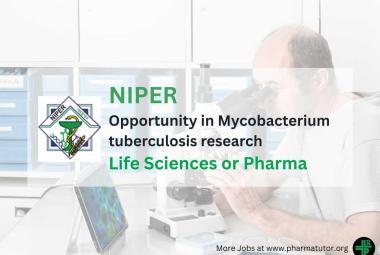 About Author:
About Author:
Banwari Lal Gupta
L.R.S. Institute of Tuberculosis & Respiratory Diseases,
New Delhi-110030
banwarigupta141@gmail.com
Abstract
Despite decades of research and drug development for cancer treatment, cancer still remains one of the major causes of human death in the world. An important aspect in cancer therapy is the development of a targeted drug delivery system that decreases the toxic side effects of chemotherapy and other cancer therapies. The current conventional method in treating cancer involves inserting catheters to allow for chemotherapy, to reduce the amount of cancer present, and/or then to surgically remove the tumors, followed by more chemotherapy and radiation sessions.
Research on thermal therapy- the heating of pathological tissue using energy source (radiofrequency, microwave, high-intensity focused ultrasound or laser energy and cryosurgery. There are clear reasons for using hyperthermia in cancer treatment. Treatment at temperatures between 40-44°C is cytotoxic for cells in low pO2 and low pH environmental conditions, which are found specifically within the tumor tissue, due to insufficient blood perfusion. Under such conditions radiotherapy is less effective, and systematically applied cytotoxic agents will reach such area in lower concentrations then in well perfused area. Therefore the addition of hyperthermia to chemotherapy or radiotherapy will result in at least an additive effect. Furthermore, the effects of both radiotherapy and many drugs are enhanced at an increased temperature. Hyperthermia can be allied by several methods such as: local hyperthermia, regional hyperthermia, and whole-body hyperthermia.
Countless researches are on their way, in the relation of improvement of heating techniques, development of hyperthermia planning models and thermometry. The clinical studies have confirmed future expectations of hyperthermiawould be valuable. Hyperthermia is a potential combined approach and deserving more attention for its further development. This article will throw the lights on hyperthermia therapy for improvement of cancer treatment.
[adsense:336x280:8701650588]
REFERENCE ID: PHARMATUTOR-ART-1802
History
The use of thermal energy for therapeutic purposes dates back thousands of years. Probably the oldest report related to thermal therapy was found in the Egyptian Edwin Smith surgical papyrus, dated around 3000 BC. Researchers like to cite Hippocrates (560-370 BC) in particular, although the method he describes in one of his aphorism, i.e., hot irons, involves higher temperatures, such as those used in cauterization. In nineteenth and twentieth centuries, fever therapy has been used as a method to increase temperatures [1]. In India, heat treatment have been using since thousand years for breast cancer. In the 1960, a series of biochemical reported the effect of heat on rodent’s malignant cells and normal cells. Based on data, researchers have concluded that cancer cells were more sensitive to heat rather then normal cells [2]. A worldwide interest in hyperthermia was initiated by the first international congress on hyperthermic oncology in Washington in 1975. Several randomised studies demonstrating that the there are huge improvements in treatment while using adequate heating procedure. [3]
Introduction
Hyperthermia therapy is a one of medical treatment in which body tissue is exposed to slightly temperature to damage and kill cancer cells or to make cancer cells more sensitive towards radiation and certain anti-cancer drugs. [4] Numerous clinical trials have studied with relation of hyperthermia in combination with radiation and/or chemotherapy. These were mainly focused on treatment of various types of cancers such as- sarcoma, melanoma, and some of carcinoma (cancer of lung, breast, head & neck, bladder, rectum, liver, esophagus). Many of trials showed positive results but not all of them [5].
[adsense:468x15:2204050025]
Types of hyperthermia therapy
Three types of hyperthermia have been investigated by researchers in mainstream medicine: local, regional and whole-body [6].
* In local hyperthermia, heat is applied to a small area, such as a tumor, using various techniques that deliver energy to heat tumor. Different types of energy may be used to apply heat, including microwave, radiofrequency, and ultrasound. Depend up on tumor location, there are several appropriate to local hyperthermia:
· External approachesare used to treat tumors that are in or just below the skin. External applicators are positioned around or near the appropriate region, and energy is focused on the tumor to raise its temperature.
· Intraluminal or endocavitary methodsmay be used to treat tumors within or near body cavities, such as the esophagus or rectum. Probes are placed inside the cavity and inserted into the tumor to deliver the energy and heat the area directly.
· Interstitial techniquesare used to treat tumors deep within the body, such as brain tumors. This technique allows the tumor to be heated to higher temperatures then external techniques. Under anesthesia, probes or needles are inserted into the tumor. Imaging techniques, such as ultrasound, may be used to make sure the probe is properly positioned within the tumor. The heat source is then inserted into the probe. Radiofrequency ablation (RFA) is a type of interstitial hyperthermia that uses radio waves to heat and kill cancer cells.
- In regional hyperthermia, various approaches may be used to heat large area of tissue, such as a body cavity, organ, or limb.
- Deep tissue approachesmay be used to treat cancers within the body, such as cervical or bladder cancer. External applicators are positioned around the body cavity or organ to be treated, and microwave or radiofrequency energy is used on the area to raise its temperature.
- Regional perfusion techniques can be used to treat cancers in the arms and legs, such as melanoma, or cancer in some organs, such as the liver or lung. In this procedure, some of the patient’s blood is removed, heated, and then pumped (perfused) back into the limb or organ. Anticancer drugs are commonly given during this treatment.
- Continuous hyperthermic peritoneal perfusion (CHPP) is a technique used to treat cancers within the peritoneal cavity (the space within the abdomen that contains the intestine, stomach, and liver), including primary peritoneal mesothelioma and stomach cancer. During surgery, heated anticancer drugs flow from a warming device through the peritoneal cavity. The peritoneal cavity temperature reaches 106-108°F.
* Whole-body hyperthermia is used to treat metastatic cancer that has spread throughout the body. This can be accomplished by several techniques that raise the body temperature to 107-108°F, including the use of thermal chambers (similar to large incubators) or hot water blankets.
The effectiveness of hyperthermia treatment is related to the temperature achieved during the treatment, as well as the length of treatment and tissue characteristics. Most normal tissues are not harmed during conventional medical hyperthermia if the temperature stays below 111-113°F [2, 3].
NOW YOU CAN ALSO PUBLISH YOUR ARTICLE ONLINE.
SUBMIT YOUR ARTICLE/PROJECT AT articles@pharmatutor.org
Subscribe to Pharmatutor Alerts by Email
FIND OUT MORE ARTICLES AT OUR DATABASE
Mechanism of action
Hyperthermia may kill or weaken cancer cells, and is controlled to limit effects on normal cells. Cancer cells, with a disorganized and compact vascular structure, have difficulty dissipating heat. Hyperthermia may therefore cause apoptosis of cancer cells in the response of heat, while healthy tissue can more easily maintain a normal temperature. Even if the cancerous cells do not die outright, they may become more susceptible to radiation therapy or to certain chemotherapy drugs, which may allow such therapy to be given in smaller doses. Intense heating leads denaturationa and coagulation of cellular proteins, rapidly killing cells within a tumor. Hyperthermia can kill cancer cells directly, but it’s more important use as combination therapy with other cancer treatments. Hyperthermia increases blood flow to the warmed area, perhaps doubling perfusion in tumors, while increasing perfusion in normal tissue by 10 times or more. This enhances the delivery of medications. Hyperthermia also increases oxygen delivery to the area, which may make radiation more likely to kill cancer cells, as well as preventing them from repairing [7]. Cancerous cells are not inherently more susceptible to the effect of heat. When compared in in vitro studies, normal cells and cancer cells show the same responses to heat [3, 4, 7]. However, the vascular disorganization of a sold tumor results in an unfavorable microenvironment inside tumors. Consequently, the tumor cells are already stressed by low oxygen, higher then normal acid concentrations, and insufficient nutrients, thus significantly less able to tolerate the added stress of heat then a healthy cell in normal tissue [8].
Future aspects
The results from experimental studies indicate that hyperthermia is both the ideal complementary treatment to, and a strong sensitizer of, radiotherapy and many cytotoxic drugs [9, 10]. Hyperthermia is not yet a fully developed modality; there are still problem with its routine clinical application, and there is still room for further technological improvements. With the presently available equipment for local hyperthermia, only a limited number of tumor sites can be treated adequately. It may not seem a sensible approach to combine systematic chemotherapy with local hyperthermia, but for patients who are palliatively treated for a tumor in an accessible location, the addition hyperthermia can be valuable.
Referees
1. Thermal Therapy, Part 1: An Introduction to Thermal Therapy: Critical Reviews TM in Biomedical Engineering, 34(6):459-489 (2006).
2. Van der Zee J. Heating the patient: a promising approach? Annals of Oncology 2002; 13(8): 1173-1184.
3. cancer.gov/Treatment/TreatmentsandSideEffect&/ComplementryandAlternativeMedicine/ManualHeatingandPhysicalTouch/heat-therapy.
4. National Cancer Institute. NCI Fact Sheet: Hyperthermia in cancer treatment: Questions and Answers. Accessed at http://www.cancer.gov/cancertopics/factsheet/Therapy/hyperthermia on January 14, 2001.
5. Wust P, Hildebrandt B, Sreenivasa G, et al. Hyperthermia in combined treatment of cancer. The Lancet Oncology 2002; 3(8):487-497. [PubMed Abstract]
6. Kapp DS, Hahn GM, Carlson RW. Principle of Hyperthermia. In: Bast RC Jr., Kufe DW, Pollock RE, et al., editors. Cancer Medicine e.5th ed. Hamilton, Ontario: B.C. Decker Inc., 2000.
7. A Review Report on Cancer Treatment: http://pharmatutor.org/articles/a-review-report-on-cancer-treatment.
8. Hildebrandt B, Wust P, Ahlers O, at al. The cellular and molecular basis of hyperthermia. Critical Reviews in Oncology/Hematology 2002; 43(1):33-56 [PubMed Abstract]
9. Robins HI, Rushing D, Kutz M, et al. Phase I clinical trial of melphalan and 41.8/C whole-body hyperthermia in cancer patients. J Clin Oncol. 1997;15:158-164
10. INVITED REVIEW Hyperthermia in oncology INT. J. HYPERTHERMIA, 2001, VOL. 17, NO. 1, 1-18
Related National Cancer Institute materials and Web pages
* Taking Part in Cancer Treatment Research Studies
cancer.gov/clinicaltrials/Taking-Part-in-Cancer-Treatment-Research-Studies
* Chemotherapy and You: Support for People with Cancer
cancer.gov/cancertopics/chemotherapy-and-you
* Radiation Therapy for Cancer Fact Sheet
cancer.gov/cancertopics/factsheet/Therapy/radiation
* Radiation Therapy and You: Support people with Cancer
cancer.gov/cancertopics/radiation-therapy-and-you
NOW YOU CAN ALSO PUBLISH YOUR ARTICLE ONLINE.
SUBMIT YOUR ARTICLE/PROJECT AT articles@pharmatutor.org
Subscribe to Pharmatutor Alerts by Email
FIND OUT MORE ARTICLES AT OUR DATABASE









